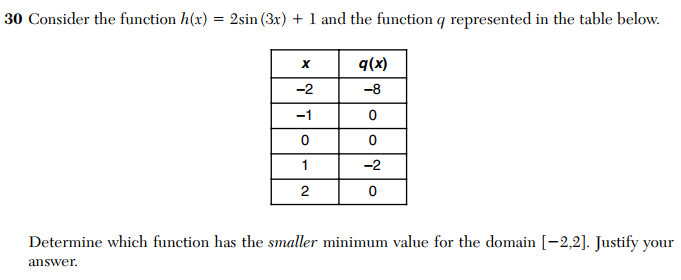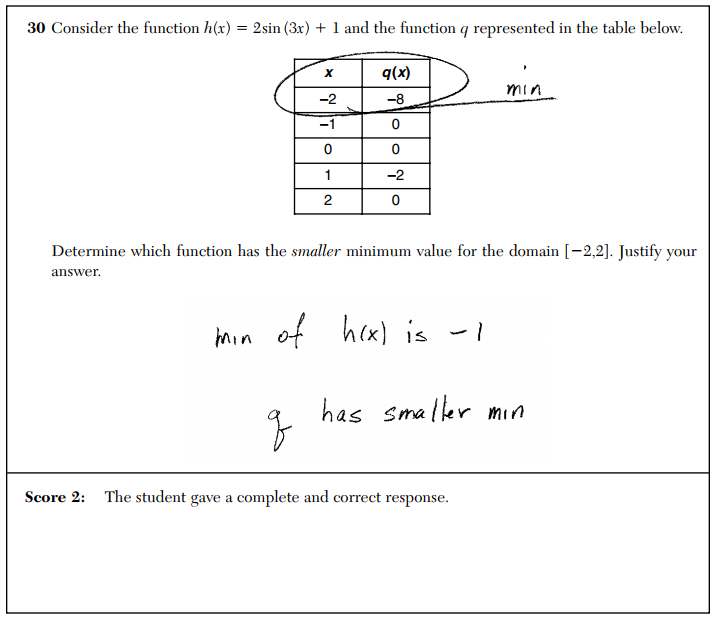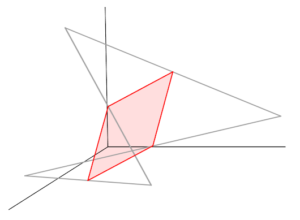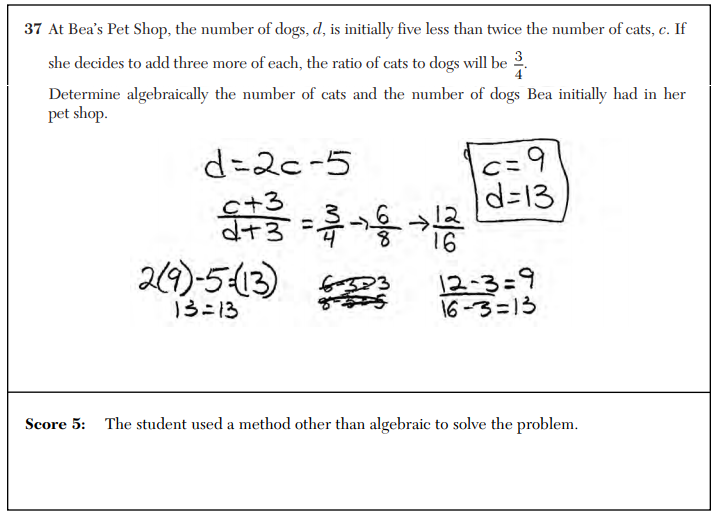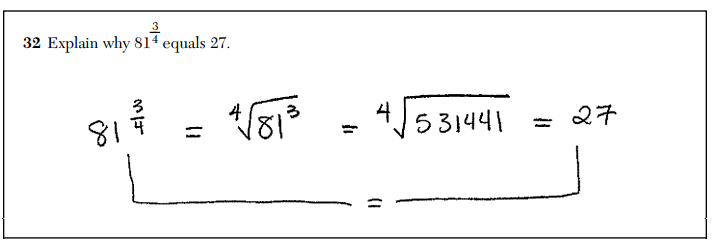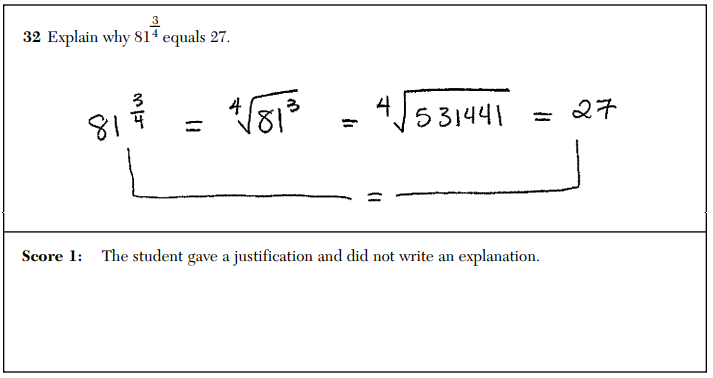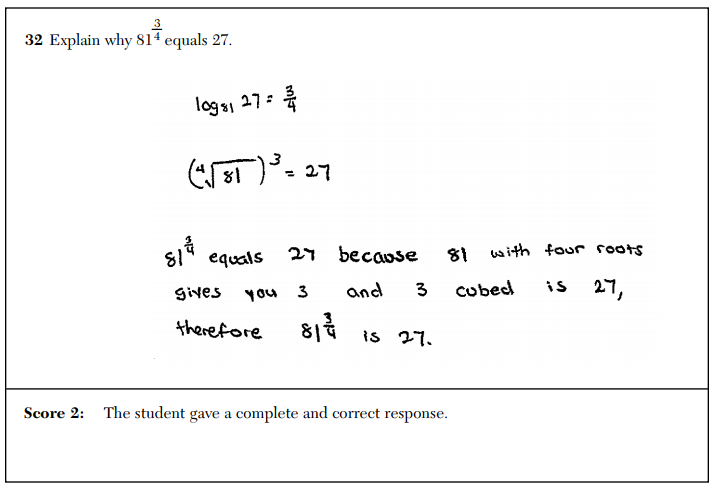As an AP Calculus teacher, I looked upon number 30 on the January, 2018 Algebra 2 exam with great trepidation.
Functions are frequently given as tables in AP Calculus. This alternate representation of function helps create a numerical bridge between their formal and graphical representations, and it can also establish connections with data and statistics. If nothing else, the ability to represent and understand mathematical objects in different ways is incredibly powerful.
But it’s crucially important to understand that tables, by design, represent only a small sample of a function. Unless we have other information, there’s very little we can say about what the function does outside the table values. In particular, we have no reason to believe that the largest value in the table is the largest value the functions takes, either globally or locally: the function could do practically anything in between the given values. This is a common misconception among calculus students, and it takes consistent effort to correct it.
Thus, I was worried to see a Regents question asking about extreme values for a function given as a table. As it turns out, there’s nothing mathematically wrong with this particular question: the given trigonometric function is bounded between -1 and 3, so the fact that q(x) takes a value of -8 means it must take the smaller minimum value. However, it would be a mistake to claim that the minimum value of q(x) is -8, as the function could potentially drop below -8 between any pair of given values on that interval.
So it’s disheartening to see student work that makes this exact claim labelled as “complete and correct”.
I think this is a fairly reasonable answer for an Algebra 2 student. And I don’t entirely blame them for not fully understanding the subtleties of the correct argument: that the minimum value of q(x) must be less than or equal to -8, which is less than the minimum value of h(x), and therefore q(x) must have the smaller minimum value.
But I do blame the test makers for not fully understanding the subtleties of the correct argument. And I blame them for writing yet another test question that promotes bad mathematical habits, by expecting and rewarding an incomplete answer, and setting students up for deeper misconceptions later on down the line.
Related Posts
